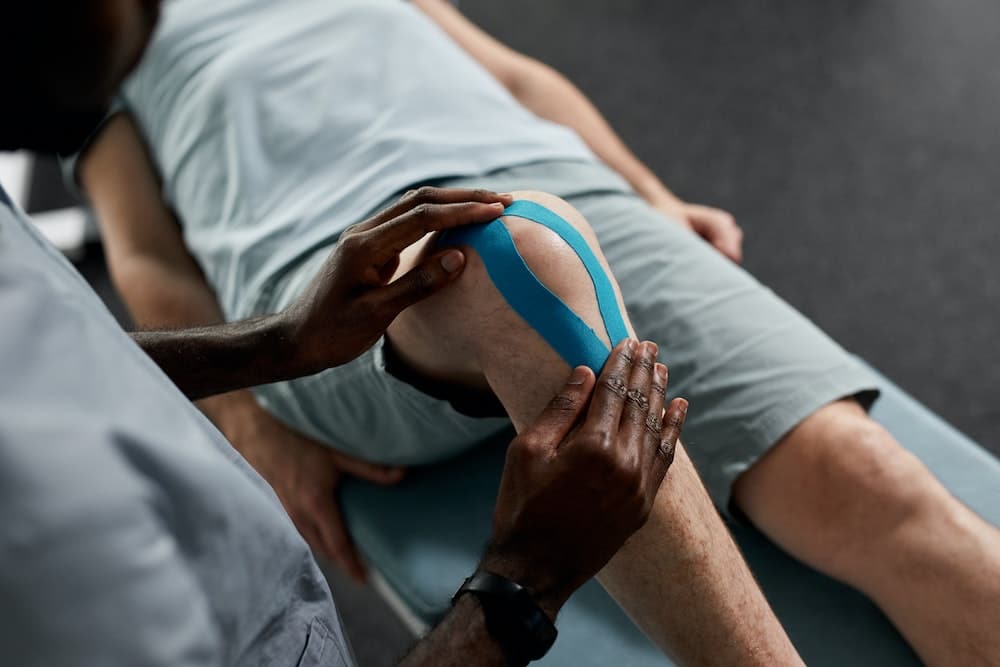How to Structure a Therapeutic Exercise Program for a Dog Recovering from Knee Surgery?

Recovering from a knee surgery can be an arduous journey for dogs. Not only does it involve pain management, but it also requires a well-planned and systematic rehabilitation program to ensure a smooth and speedy recovery. A well-designed therapeutic exercise program can play a crucial role in this process, aiding in faster wound healing, strengthening weakened muscles, and improving joint flexibility. In this piece, we will delve into how to structure an effective exercise regime for your furry friend following a knee surgery.
Understanding the Importance of Rehabilitation Post-Surgery
Following a surgical procedure, especially one like knee surgery that involves the critical cruciate ligament (CCL), it is paramount that dogs undergo a structured and comprehensive rehabilitation program. This form of therapy, often overseen by a veterinary professional, goes a long way in helping your pet regain strength, mobility, and overall function in the affected joint.
Cela peut vous intéresser : Can You Train a Cat to Perform Agility Tasks Comparable to Dogs?
Physical therapy exercises are typically targeted at restoring joint flexibility, strengthening muscles, and improving gait and balance. Additionally, they also aid in reducing post-surgical inflammation and pain, speeding up the recovery process. Your veterinary surgeon will likely suggest a combination of therapies suitable for your dog’s specific condition and needs.
The Initial Phase: Gentle Movements and Passive Exercises
The initial phase of rehabilitation following a knee surgery is often gentle and cautious. Based on your dog’s surgical injury and the veterinary surgeon’s advice, this phase may last from a few days to a couple of weeks. The aim here is to prevent stiffness, enhance circulation, and gradually build strength in the knee joint and adjoining muscles without causing undue pain or stress.
A voir aussi : What Are the Best Species to Consider for a Coldwater Marine Aquarium?
Passive range of motion (PROM) exercises are commonly recommended in this phase. These exercises involve moving the dog’s knee joint gently and is performed while the dog is in a relaxed, laying down position. Remember, the movements should be slow and controlled, and any signs of discomfort from your dog should warrant an immediate pause.
Another crucial aspect of this phase is pain management. Regular veterinary consultations will ensure that your dog’s pain is effectively managed, thereby making the rehabilitation process smoother.
The Intermediate Phase: Physiotherapy and Controlled Walks
Once your dog’s condition starts to improve, and the pain is relatively managed, they can progress to the intermediate phase of the rehabilitation program. This phase involves a gradual increase in physical activity to continue muscle strengthening and joint flexibility.
A common therapeutic intervention used in this phase is physiotherapy, which may include massages, stretching, and specific exercises. These therapies can help decrease stiffness, improve joint mobility, and relieve any residual pain.
Additionally, controlled walks are typically introduced during the intermediate phase. Start with short-distance walks on flat surfaces and gradually increase the distance and complexity as your dog’s strength and confidence grow. This will help retrain your dog’s gait and further strengthen the muscles around the knee joint.
The Advanced Phase: Active Exercises and Agility Training
Once your dog’s pain is well-controlled, and they show significant improvements in muscle strength and joint flexibility, it’s time to move onto the advanced phase of the recovery process. This phase incorporates more active exercises and may even include agility training.
Active exercises might involve activities like swimming, which is excellent for joint mobility and muscle strengthening without causing undue stress on the joints. Similarly, agility training, which involves navigating through obstacles, is beneficial for improving your dog’s coordination, balance, and confidence.
Again, it’s essential to remember that each dog is unique, and their progression through these phases will vary. Always consult with your veterinary surgeon before introducing new exercises into your dog’s routine.
Maintaining a Long-term Exercise Program
Once your dog has fully recovered from their knee surgery, it’s essential to maintain an active lifestyle to avoid any potential future injuries. Keeping your dog engaged in regular, moderate exercises will help maintain muscle strength, joint flexibility, and overall fitness.
Creating an enjoyable and stimulating environment for your dog to exercise in will help keep them motivated. Incorporating fun activities, such as fetching a ball or playing with other dogs, can make exercise seem less like a chore and more like a treat.
Continued veterinary consultations are also crucial in this phase. Regular check-ups allow your veterinary surgeon to monitor your dog’s progress, address any potential concerns early, and adjust the exercise program as needed.
The journey to recovery from knee surgery is a slow and gradual process, filled with milestones of progress. And while it might seem daunting at first, a well-planned and executed therapeutic exercise program can make this journey less stressful for both you and your furry friend. By keeping these guidelines in mind and consulting regularly with your veterinary surgeon, you can help your dog bounce back after knee surgery, stronger and happier.
Therapeutic Modalities: How Laser Therapy and Suture Stabilization Aid in Recovery
Apart from diligent physical rehabilitation, implementing therapeutic modalities such as laser therapy and suture stabilization can enhance your dog’s recovery post-surgery. These treatment techniques further aid in relieving pain, reducing inflammation, and stimulating tissue healing.
Laser therapy, also known as Photobiomodulation, is a non-invasive treatment that uses specific wavelengths of light to stimulate cells and enhance the healing process. This form of therapy is particularly beneficial in treating CCL injuries as it helps in reducing inflammation and pain, enhancing circulation, and promoting tissue repair in the knee joint. It’s a painless procedure that your pet may find soothing, and it dramatically aids in the recovery process.
Suture stabilization is a surgical procedure often used for dogs who’ve undergone TPLO surgery (Tibial Plateau Leveling Osteotomy). This technique involves using sutures to provide additional stability to the knee joint, preventing excessive movement and facilitating the healing process of the cruciate ligament. This method is often preferred for its proficiency in helping dogs regain their normal range of motion post-surgery.
These therapeutic modalities, along with a meticulously planned physical rehabilitation program, can significantly reduce muscle atrophy, promote muscle mass development, and enhance overall recovery post-knee surgery in dogs.
A Final Word: The Role of Rest, Nutrition, and Regular Veterinary Checkups
While an active rehabilitation program is crucial for your dog’s recovery from knee surgery, rest and proper nutrition are equally important. Rest allows the body to heal, while good nutrition provides the essential nutrients needed for tissue repair and muscle building.
Feed your dog a balanced diet rich in protein to help build muscle mass. Supplements such as glucosamine and chondroitin may also be beneficial for joint health. However, it’s essential to consult with your vet before introducing any new supplements to your dog’s diet.
During the recovery journey, regular veterinary checkups are imperative. Your veterinary surgeon can monitor your dog’s progress, make necessary adjustments to the exercise program, and address any potential concerns. They can also provide guidance on managing any long-term effects of the surgery. Regular veterinary visits are an integral part of the recovery process, ensuring your dog’s return to health is well-monitored and successful.
The path to recovery from ACL surgery or other knee joint procedures in dogs can be a lengthy one, and patience is key. However, by following a structured exercise program, implementing therapeutic modalities, ensuring adequate rest and proper nutrition, and keeping up with regular veterinary checkups, your dog can make a full recovery. Remember, your furry friend’s resilience and your unwavering support are the most crucial elements in this journey towards recovery.
